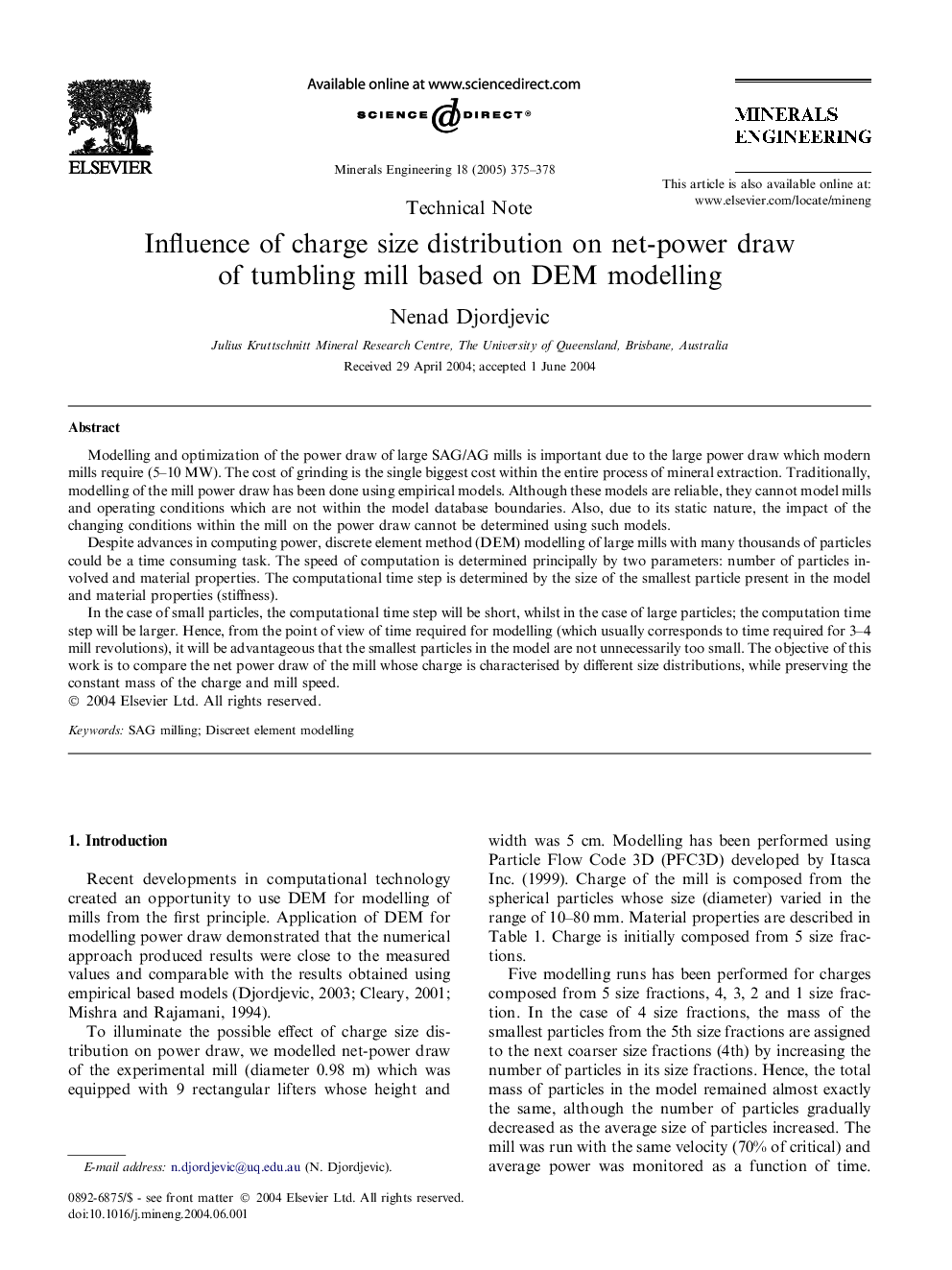| Article ID | Journal | Published Year | Pages | File Type |
|---|---|---|---|---|
| 10279932 | Minerals Engineering | 2005 | 4 Pages |
Abstract
In the case of small particles, the computational time step will be short, whilst in the case of large particles; the computation time step will be larger. Hence, from the point of view of time required for modelling (which usually corresponds to time required for 3-4 mill revolutions), it will be advantageous that the smallest particles in the model are not unnecessarily too small. The objective of this work is to compare the net power draw of the mill whose charge is characterised by different size distributions, while preserving the constant mass of the charge and mill speed.
Related Topics
Physical Sciences and Engineering
Chemical Engineering
Chemical Engineering (General)
Authors
Nenad Djordjevic,
